In one weekend, the seminal work of a national artist and her famous collaborators coincided with the lavish experimental spectacle mounted by millennial creatives.
Alice Reyes Dance Philippines revived “Encantada,” Agnes Locsin’s narrative about a mountain spirit/nature guardian, the rape of the environment and how women power restored balance in nature and society.
Meanwhile, Ballet Philippines (BP) premiered “Diyosa,” a multimedia abstract ballet about local gods and goddesses, Pinoy culture and the deterioration and regeneration of the environment, conceptualized by designer-provocateur Carlo Calma.
While many social media feeds from the arts community gushed about the spellbinding effect of “Encantada,” the socialites posted their photos in deconstructed Filipiniana formals at the gala of “Diyosa.”
‘Encantada’
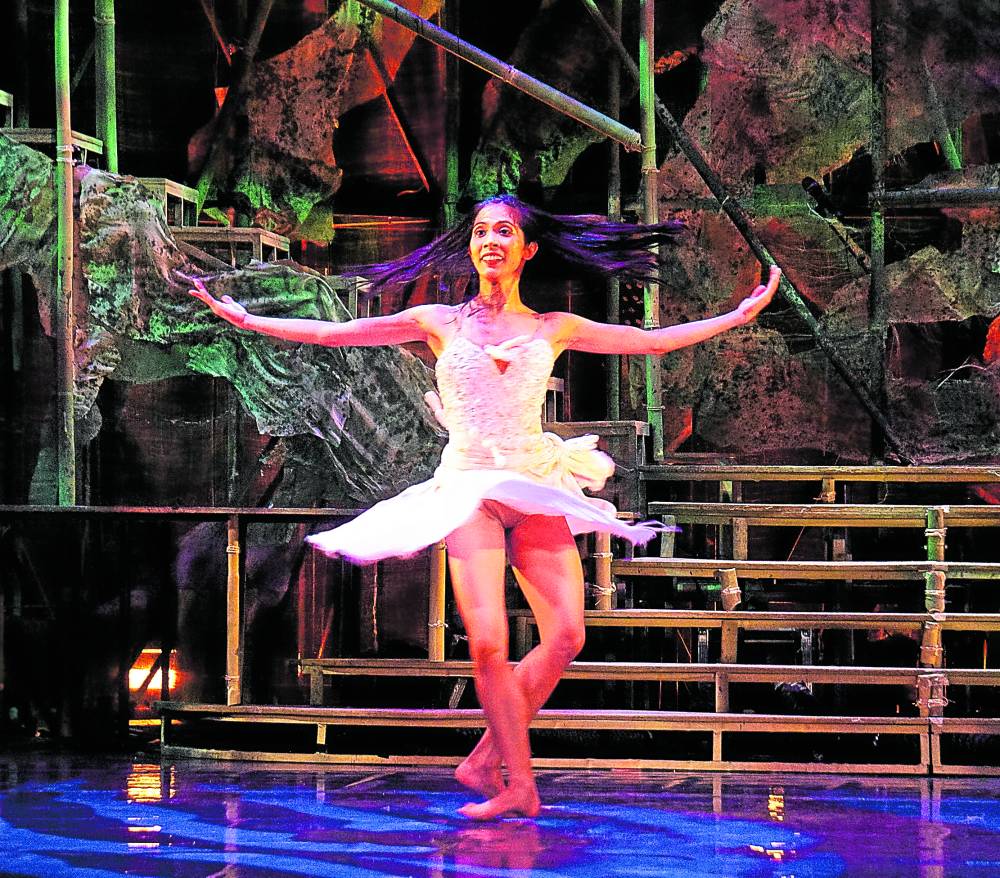
Three decades since its premiere, National Artist for Dance Locsin’s “Encantada” seemed more significant than ever. Locsin tackled subjects such as women leaders in religion, the patriarchal system, folk religion and environmental misuse.
Disillusioned by the abuses of the Church, the Estranghero rebeled by stealing the Sto. Niño and escaped to the mountains where he was protected by a community of female mystics, the Babaylan and the Kababaihan.
When the Encantada removed the Sto. Niño’s fancy clothes, she realized that it was their missing icon. The Fraile then ordered the Guardias Civil to go on a witch hunt for the suspected thieves. The Estranghero was eventually caught and
killed. The Babaylan and the Kababaihan retaliated by fighting the soldiers, but the women get raped. Their forest was pillaged on the orders of the Fraile. Shocked by the savagery, the Encantada cried a river that washed away the lowlands, including the antagonists. The new life burst into a triumphant dance.
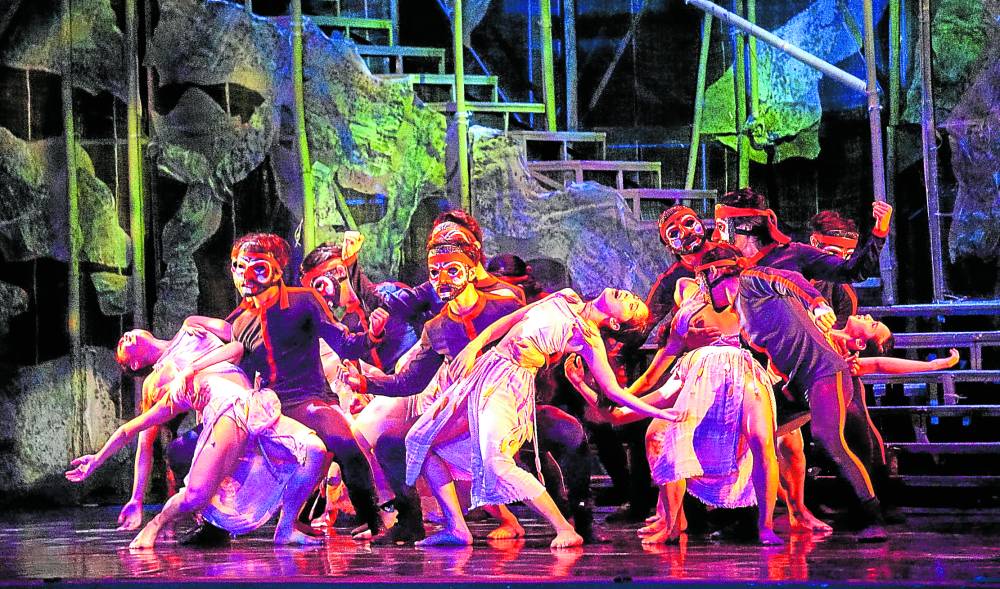
Locsin developed her own vocabulary, the Neo-Ethnic, derived from trance dances, tribal steps, Catholic worship gestures, healing rituals, folk pageantry and the Moro-Moro. They were seamlessly woven into contemporary dance and organic movements. The flailing hair created rippling effects that evoked water and lava flow that wiped out the earth.
The perfection-obsessed choreographer brought back theater as a ritual. Having choreographed the steps when she was in an alter state, Locsin recreated that feeling as she motivated the dancers to lose themselves into their roles. She fed them with imagery in dance to help them make connection between their physicality and artistry. The collective focus onstage built up a powerful atmosphere that mesmerized the audience who felt as if they were part of the rituals.
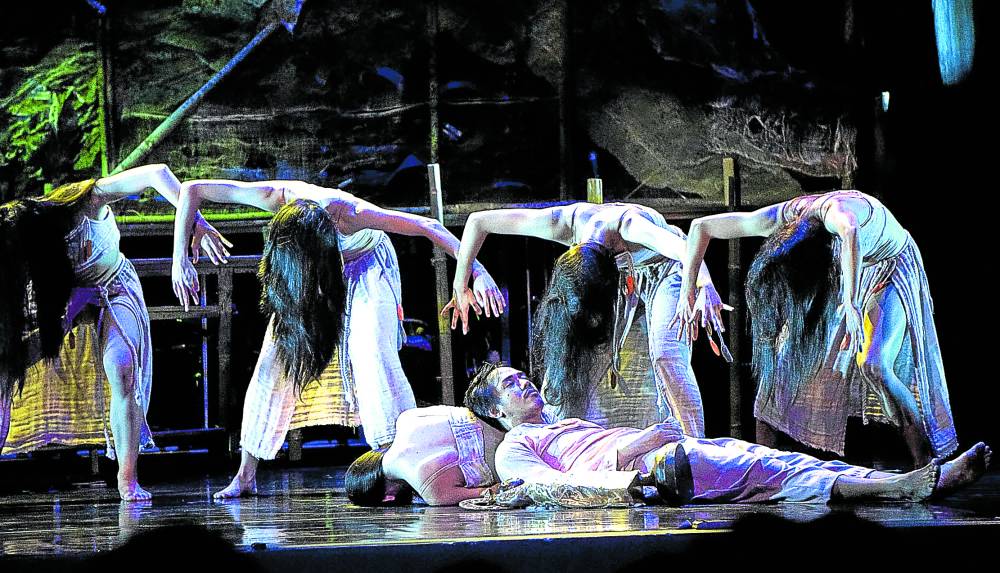
The willowy Sarah Alejandro, she with the fluid spine and rippling arms, floated like a vision in the title role. A foil to Alejandro, Carissa Adea as the Babaylan was steely and earthy. John Ababon was moving as the Estranghero while Lester Reguindin as the menacing Fraile was commanding.
Aside from the intensity and emotional commitment of the dancers, the success of “Encantada” was likewise attributed to Locsin’s collaboration with librettist Al Santos and composer Joey Ayala.
Lighting by John Batalla was the only thing that didn’t impress. I found the design too mottled and at times too dark that I couldn’t see the dance.
‘Diyosa’
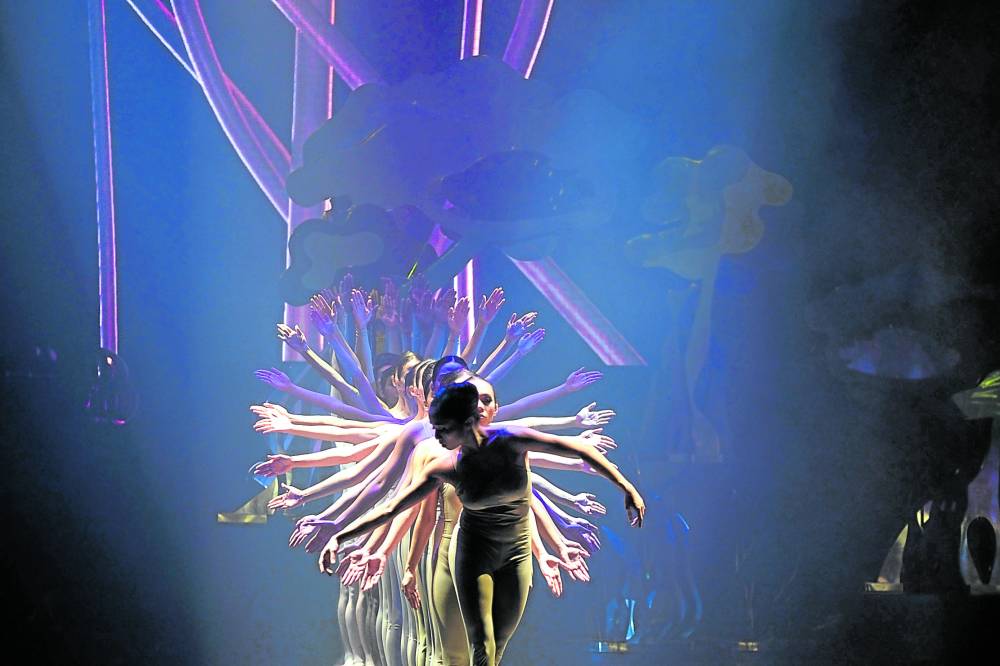
Carlo Calma just sealed his reputation from expressionist design consultant to the enfant terrible of contemporary art.
“Diyosa” was a work of love for Calma who wrote the libretto, designed the pillowy costumes which are soft sculptures, apparatuses made from architectural salvages, collages and video installations from architectural software. He details all these elements in a 500-page book “An Architect’s Guide to Making a Ballet,” which also includes photos of his unconventional architectural projects.
In the first scene, an abstraction of a cockroach flashed on the giant LED screen which signaled the coming of an apocalypse, said Calma. Meanwhile, the set was filled laser-cut metal trees and vines. The gods and goddesses, draped in white soft sculptures, made their entrance not like imperious deities but more like shoppers in Solaire. Suddenly there was an aerial dance, suggesting that the deity was being entwined in the vine.
Because the video images were not proportioned to heights of the dancers, the former competed with the live action. It was challenging for the audience to make a visual connection.
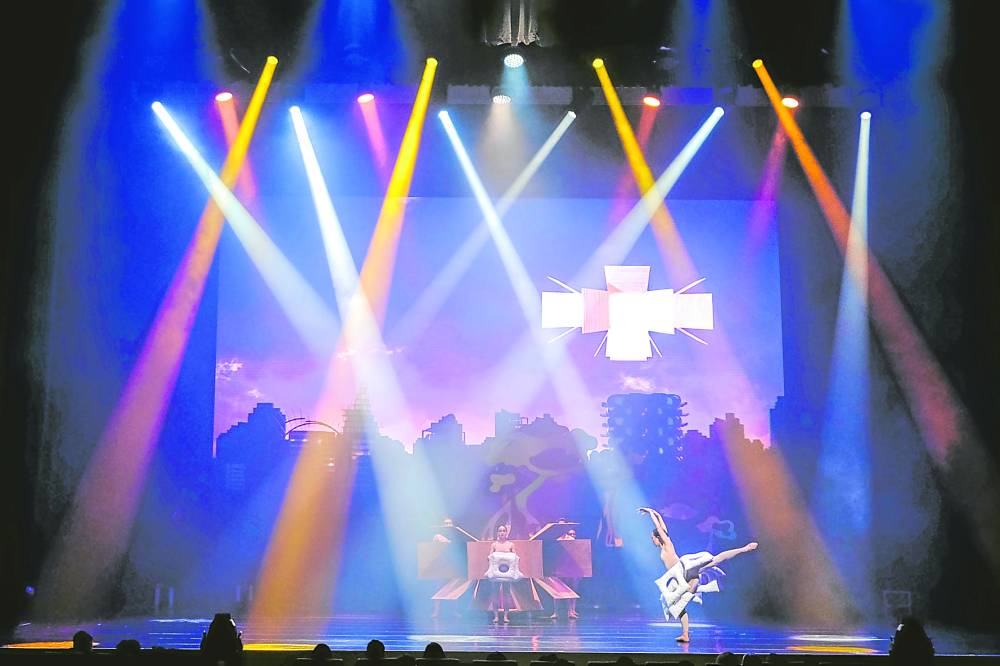
Lakanda, an androgyny of Malakas and Maganda, entered a portal of the Tree of Life which led to scenes of catastrophes such as forest fires, land mines, land fills, pollution and climate change. Later in the dance, unbeknownst to the audience were hanging wooden medallions of sculpted faces of the gods and goddesses.
In the second act, Lakanda went into a deep sleep and woke up to realize that the world needed to be saved, according to the librettist’s notes. Without any clear transition, the stage became a video arcade of a cockfight between the god of the Sun and the god of the Moon with a Game Master as referee.
After a drawn-out sabong, the scene shifted to Lakanda, waking to see gods and goddesses dancing, apparatuses being rolled out to symbolize buildings and video installations of futuristic cities.
This ambitious production called for a seasoned choreographer and a tough director to reign in Calma’s fertile ideas and special effects. The audience needed to see a clear, albeit literal, trajectory of the theme of decay and regeneration. The director or choreographer should have guided Pitch Veil in the scoring and the lighting designer whose loud lights overshadowed the dancing. Although we were unmoved by the choreography, the matinee crowd clapped enthusiastically by the overload of spectacle after every scene.
BP artistic director Mikhail Martynyuk is too raw to mount a full-length ballet. The choreography was not only short on imagination, clarity, intention and focus but the dancing also lacked dynamics. BP dancers, though technically gifted, were wasted executing ballet for its own sake. It was hard to distinguish one character from the next. The soft sculpture costumes, said to evoke clouds, weighed down their movements. The aerial dance sequences looked so belabored and didn’t help to convey the theme. The preparation on the silk cords took longer than the final poses. The atmospheric music was so monotonous, we felt like a zombie after the show.
Nonetheless, “Diyosa,” though conceptual in approach, was very Pinoy—a mélange of art on overdrive. —CONTRIBUTED













































